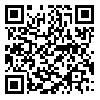چکیده:
Despite extensive study, the ways in which conscious and unconscious priming influence visual perception remain only partially understood. In this work, we examine their distinct effects across multiple experimental conditions within a binocular rivalry paradigm, in order to provide a more comprehensive perspective on identity and category recognition. Participants were presented with word or image primes, followed by a name–picture verification task in which faces or animal bodies served as targets. Although conscious priming has been shown to facilitate identity recognition while interfering with category perception, the precise distinction between conscious and unconscious states and the mechanisms underlying unconscious priming requires more detailed analysis and investigation. Left hemispheric processing was one of the influential factors in distinguishing the conscious and unconscious priming effects. Interestingly, we observed a negative correlation between conscious and unconscious perception during identity recognition, highlighting the condition-dependent modulation of visual perception in the priming paradigm. Awareness showd from the regression analyses as the strongest predictor of priming magnitude, with recognition level playing a secondary role. More broadly, our findings demonstrate that visual perception circuits are modulated in a condition-dependent manner, underscoring how awareness and trial context jointly shape recognition processes.
| بازنشر اطلاعات | |
 |
این مقاله تحت شرایط Creative Commons Attribution-NonCommercial 4.0 International License قابل بازنشر است. |





